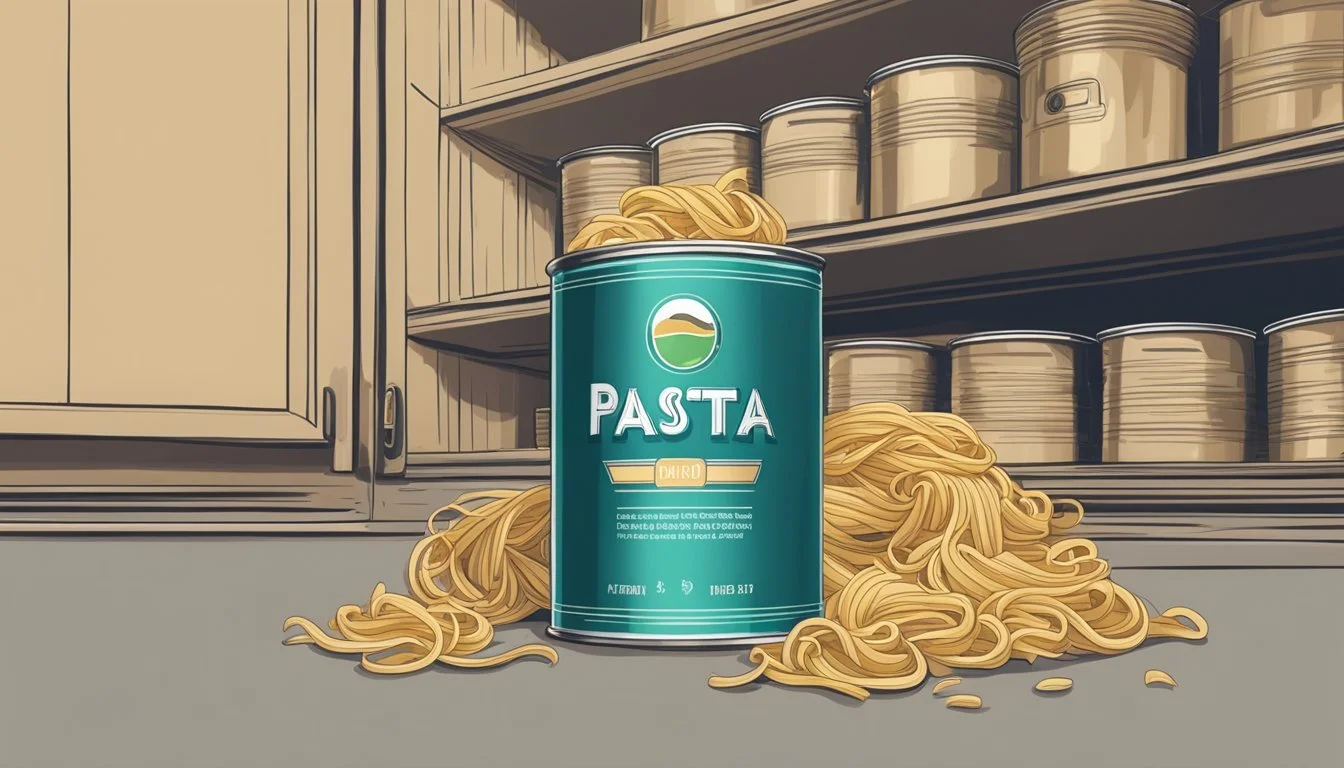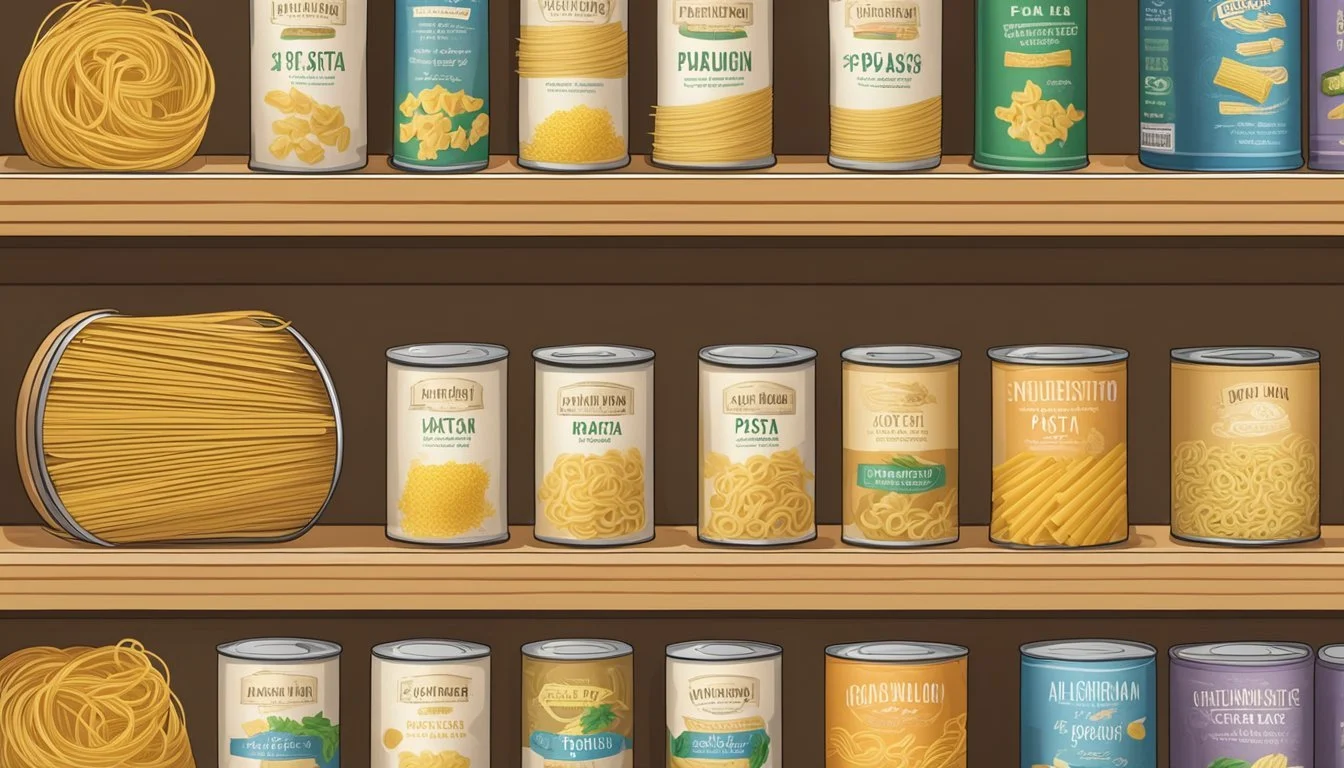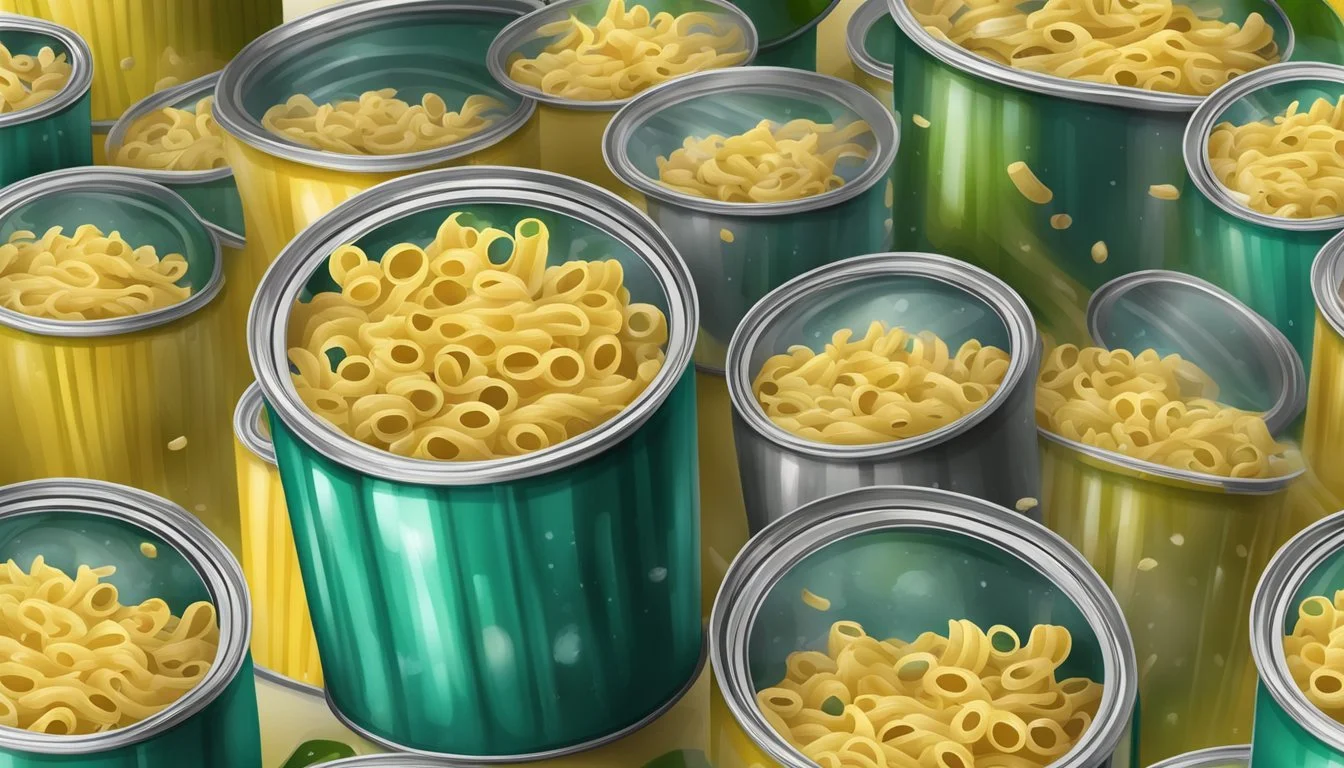Does Canned Pasta Expire?
Shelf Life and Storage Tips
Canned pasta is a popular and convenient pantry staple, appreciated for its long shelf life and ease of preparation. Many consumers wonder about how long it can be stored and whether it truly expires. Canned pasta generally has a long shelf life and can be stored safely for up to two years from the production date. However, this timeframe can vary based on factors like storage conditions and the quality of ingredients used.
Despite its longevity, it's important to check for signs of spoilage before consuming any canned pasta that may be older than its recommended shelf life. Expiration dates on cans are a guideline rather than a strict rule, indicating peak quality rather than safety. Proper storage, such as keeping the cans in a cool, dry place, can further extend its usability beyond the indicated date.
Understanding the nuances of canned pasta's shelf life helps in making informed decisions about pantry management. Always ensure that cans are intact without dents or rust, as compromised packaging can affect the pasta's longevity. Dive deeper into the detailed aspects of how to store and identify good quality canned pasta to make the most out of this versatile food item.
Understanding Expiration Dates
Expiration dates play a crucial role in ensuring the safety and quality of food products. They indicate the period during which a product is expected to remain at its best condition, provided it is stored as recommended.
The Meaning of Expiration Dates
Expiration dates are set by manufacturers to identify the last date a product is predicted to be at peak safety and quality. For shelf-stable foods, like canned pasta, these dates ensure the item retains its intended taste, texture, and nutritional value.
Factors such as storage conditions, including temperature and humidity, can affect how long a product remains viable. Cool, dry storage is essential to maximize shelf life.
Note: Expiration dates do not necessarily mean the product becomes unsafe immediately after the date passes.
Differences Between Best-by, Use-by, and Sell-by Dates
Best-by dates suggest when a product will have the best flavor or quality. Manufacturers use this date to recommend the period for optimal taste. It primarily concerns quality, not safety.
Use-by dates signify the last date recommended for the use of the product while it's at peak quality. For perishable items, this date is critical for safety and indicating when to consume the product to avoid health risks.
Sell-by dates are used by retailers to manage inventory. This date indicates how long a product should be displayed for sale. It's targeted at retailers rather than consumers, focusing on stock rotation rather than the safety of consumption.
Each date type serves a specific purpose, helping with proper storage and ensuring that food products are consumed at their best quality and safest condition.
Types of Pasta and Their Shelf Life
Different types of pasta have varying shelf lives, storage requirements, and spoilage markers. Understanding these specifics can help ensure the pasta retains its quality and safety for consumption.
Dry Pasta
Dry pasta, including spaghetti, fettuccine, and macaroni, generally has a long shelf life. When properly stored in a cool, dry place, unopened dry pasta can last for 1-2 years beyond its expiration date. The key factors here are keeping it away from moisture and contaminants. Once opened, it is best to consume dry pasta within one year for optimal taste and nutrition. Dry pasta is non-perishable due to its low moisture content, which prevents bacterial growth.
Fresh Pasta
Fresh pasta, whether store-bought or homemade, is more perishable than dry pasta. It contains higher moisture levels, making it prone to spoilage. Fresh pasta should be refrigerated and typically lasts about 2-3 days. Unopened, vacuum-sealed fresh pasta can last a bit longer, up to a week or so. Homemade pasta should be consumed quickly or frozen for long-term storage. Freezing can extend its shelf life to about 2 months without significant loss of quality or nutrition.
Canned Pasta
Canned pasta has an extensive shelf life due to its preservation methods. Unopened canned pasta can last for 1-2 years past the printed date if kept in a cool, dark place. The acidity of the sauce and the quality of ingredients can impact shelf life. After opening, canned pasta should be refrigerated and consumed within a few days. It’s crucial to check for any signs of can damage, as this can lead to spoilage even before the expiration date.
Cooked Pasta
Cooked pasta has the shortest shelf life among all types. Once cooked, pasta should be stored in an airtight container in the refrigerator and consumed within 3-5 days. Freezing cooked pasta can extend its shelf life to about 2 months. It’s important to note that reheating can impact the texture and flavor, so proper storage and reheating methods are crucial to maintain quality. Always check for signs of spoilage like off smells or mold before consuming.
Proper Storage for Pasta
Proper storage ensures pasta stays fresh and maintains its quality for a longer period. Different types of pasta require specific storage methods to preserve their taste and texture effectively.
Storing Unopened Pasta
Unopened dried pasta should be stored in a cool, dry place such as a pantry. Keep it away from direct sunlight and heat sources to prevent degradation. Use airtight containers or the original packaging to protect it from pests and moisture.
Unopened canned pasta can be safely stored in the same conditions, ensuring it remains undamaged until its best-by date. These storage conditions help maintain the pasta's quality and safety.
Best Practices for Opened Pasta
After opening, transfer dried pasta to an airtight container to keep it fresh and safe from contaminants. This prevents exposure to moisture and pests, which can compromise the quality.
For canned pasta, if only partly used, transfer the remaining content to an airtight container and refrigerate. This helps maintain the original flavor and texture. Ensure it is consumed within a few days to avoid spoilage.
Pantry vs. Refrigerator vs. Freezer
Pantry storage is ideal for dried pasta, where it can last up to two years in a cool, dry environment. Refrigerator storage is suitable for fresh pasta and opened canned pasta, providing an extended freshness period of 3 to 5 days.
To freeze pasta, whether fresh or cooked, toss it with a bit of olive oil to prevent sticking. Use freezer-safe bags or containers, removing as much air as possible before sealing. Frozen pasta can be stored for up to 2 months for optimal taste.
These methods ensure your pasta remains in the best possible condition, whether stored in the pantry, refrigerator, or freezer.
Signs of Spoiled Pasta
Detecting spoiled pasta involves examining visual indicators, texture changes, smell and taste, and the condition of the packaging. These methods help ensure safety and maintain quality.
Visual Indicators
Spoiled pasta often shows subtle or obvious visual signs. For canned pasta, any noticeable mold, discoloration, or an unusual appearance can signal spoilage. The presence of rust on the can’s surface can also be a red flag. Checking the internal appearance upon opening is crucial. If the sauce looks separated or clumpy, it may indicate spoilage. Clouding or visible particles in the liquid of canned pasta suggest bacterial growth, and it should be discarded.
Texture Changes
The texture of pasta can also change when it goes bad. Fresh pasta will feel slimy or sticky if spoiled, whereas canned pasta's consistency may become mushy or overly soft. It's important to check the liquid surrounding the pasta as well. If the liquid has thickened or become gelatinous, it indicates spoilage. Additionally, non-uniform texture with parts of the pasta feeling dry while others are excessively soft can also be a sign that the product has deteriorated.
Smell and Taste
A spoiled can of pasta often emits a sour or rancid odor. Healthy canned pasta should have a neutral or slightly savory smell corresponding to its sauce and ingredients. Any deviation from this typical odor profile can be a warning sign. Tasting should be approached with caution. If the pasta tastes acidic, bitter, or off in any way, it is best to avoid swallowing and discard the product immediately.
Packaging Damage
The condition of the can can greatly indicate the freshness of its contents. Bulging in the can, either at the top or bottom, signals gas production by bacteria inside the can, suggesting spoilage. Dents, particularly around the seams, can compromise the safety of the product by allowing bacteria to enter. Additionally, any signs of leakage or rust on the exterior point to compromised contents. A damaged or corroded can should never be consumed. Proper storage and handling reduce the risk of packaging damage, further ensuring the safety of canned pasta.
Health Risks of Consuming Expired Pasta
Expired pasta, particularly canned varieties, can pose several health risks. One primary concern is the potential for bacterial contamination. When canned pasta surpasses its expiration date, the protective seal may degrade, allowing harmful bacteria to enter and proliferate.
Foodborne illnesses can result from consuming expired pasta. Symptoms might include nausea, vomiting, and diarrhea, which are common indicators of food poisoning.
Spoilage bacteria don't always produce noticeable changes. Even if the pasta looks and smells fine, it can still harbor harmful microorganisms that can lead to health issues.
In some cases, consuming expired pasta may introduce toxins produced by certain bacteria. These toxins can be heat-resistant and may not be eliminated by cooking.
Signs of spoilage such as an off odor, unusual texture, or discoloration indicate that the pasta is unsafe to eat. It's crucial to discard any canned pasta exhibiting these signs to avoid health risks.
Table: Common Symptoms of Foodborne Illness
Symptom Description Nausea Feeling of unease and discomfort in the stomach Vomiting Forceful expulsion of stomach contents Diarrhea Frequent, loose, or watery bowel movements
Maximizing Pasta Quality and Safety
To maintain both the quality and safety of canned pasta, it is essential to follow proper handling and reheating procedures. These steps ensure optimal texture and taste while minimizing any health risks.
Safe Handling Procedures
Safe handling starts with proper storage. Canned pasta should be kept in a cool, dry place away from direct sunlight to preserve its quality. Once opened, any unused pasta should be transferred to an airtight container and refrigerated. This prevents contamination and extends its shelf life.
It's crucial to check the expiration date before use. A can that shows signs of damage, such as dents or rust, should be discarded to avoid potential contamination. Always use clean utensils when serving canned pasta to maintain its safety and quality.
Reheating and Serving Leftovers
Reheating canned pasta should be done with care to preserve its texture and taste. The pasta should be transferred to a microwave-safe dish or a saucepan. Heating it evenly helps in maintaining its original consistency. Stirring occasionally ensures even heating.
Leftover pasta can be stored in the refrigerator for up to three to four days. When reheating leftovers, it is essential to achieve an internal temperature of 165°F (74°C) to ensure safety. Using the stove or microwave, avoid overheating as this can degrade the texture and flavor.
By following these practices, one can enjoy canned pasta at its best while ensuring it remains safe to eat.
Special Considerations
When storing canned pasta, certain factors must be taken into account to ensure the product remains safe and of high quality. Below, we discuss the risks associated with pantry pests and the importance of keeping cans in good condition.
Dealing With Pantry Pests
Pantry pests, such as pantry bugs and pantry moths, can cause significant issues if not managed properly. While canned pasta itself is generally safe from these pests once sealed, other pantry items can attract them and cause an infestation.
Inspect surrounding items regularly for signs of pests. Keep the pantry clean and dry to minimize attracting pantry pests. Store dry goods in sealed containers to protect against pantry bugs and moths.
Pantry pest management tips:
Regularly clean pantry shelves.
Use airtight containers for dry goods.
Inspect products for pest activity.
The Importance of Container Integrity
Maintaining the integrity of the cans is crucial to prevent spoilage and contamination. Bulging, dented, or rusted cans can indicate potential bacterial growth and should be discarded immediately.
Key factors:
Bulging: Can suggest gas production from bacterial activity.
Dented: Risks compromise the can’s seal.
Rusted: Weakens the container, possibly leading to contamination.
Always store cans in a cool, dry place to avoid rust and deterioration. Freezing canned pasta isn't recommended due to potential damage to the container, leading to freezer burn and spoilage upon thawing. Being vigilant about these factors ensures canned pasta remains a reliable pantry staple.





